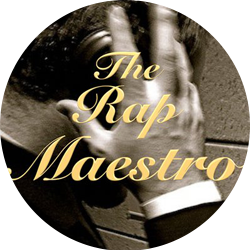I frankly was not expecting that, haha. Not because I have anything specifically against Kool G Rap, but because the rap that I listen to from that earlier period is very, very select. The earliest rappers I’m likely to turn on just for pleasure are Wu-Tang, 2pac, Notorious B.I.G., and Run-D.M.C. But beyond that, mostly everyone I’ve checked out was because I was writing a post on them and kind of had to, haha, like Rapper’s Delight, by the Sugarhill Gang. I mean, that’s a great, important song, but just not one I’m personally going to put on for pleasure.I don’t really like rappers who go that far back because, frankly, I think rappers have gotten better as time has gone on. Rakim might be held up as a great rapper for his innovations, but I truly believe that his innovations have been assimilated and improved on by other people. He might extend and shorten his lines in unexpected ways poetically and musically, but he was never able to put them into structures that fit as well together as those of Notorious B.I.G., like on “Hypnotize.” Kool G Rap might have long, complex, multisyllabic rhymes, but I wasn’t sure if he ever combined production genius with a completely novel, complex rhyme scheme like Eminem did on “Lose Yourself.”
However, I really enjoyed this Kool G Rap song, which, like I said, was unexpected. On this song, though, I wasn’t looking for his rhymes, which is generally the last thing I pick up on a song, but the rhythms of his words. What I enjoyed so much about his musical rhythms on this song was the one, small, but very unique/characteristic idea he kept repeating. It was honestly music to my ears — pun intended — when he started repeating the idea that he first mentions around 0:11, on the words “front of my.” The important aspects of this idea are that it’s 3-notes long, and faster than his other rhythms, and are triplets (which is a technical, musical term, so I won’t go into it.) This 3-note and fast rhythm, which I’ll call rhythm 1 just for simplicity’s sake, stands out from his other rhythms, which are generally slower.
That’s because this is clearly a musician who understands how to unify an extended musical structure, a 4-minute long song, in unique ways. His simple repetition of a unique rhythm is a great way to keep the thread of dramatic tension throughout this entire song taught. After 0:36, I’m not paying at all to the words Kool G Rap is saying, but instead listening for that unique rhythm. Every time it comes back, it’s a relieving satisfaction of my musical expectations. For instance, he does it again at 0:45 and 0:55. I’ll let you track down the rest of the times it occurs, because it’s honestly so much fun to do so.
If you liked this article, you might enjoy these other ones, which are among my most popular:
1.) An analysis of Nas’ flow on the 2006 Busta Rhymes song “Don’t Get Carried Away,” which you can read here.
2.) My album review & analysis of the 2012 Kendrick Lamar album “good kid, m.A.A.d city,” which you can read here.
3.) A database of who the 23 most repetitive rappers in the industry are, available here.
4.) A study of every instrument Dr. Dre used on his songs between the years 2000 and 2009, online here.
5.) A breakdown of Eminem’s song “Business,” which you can check out here.

